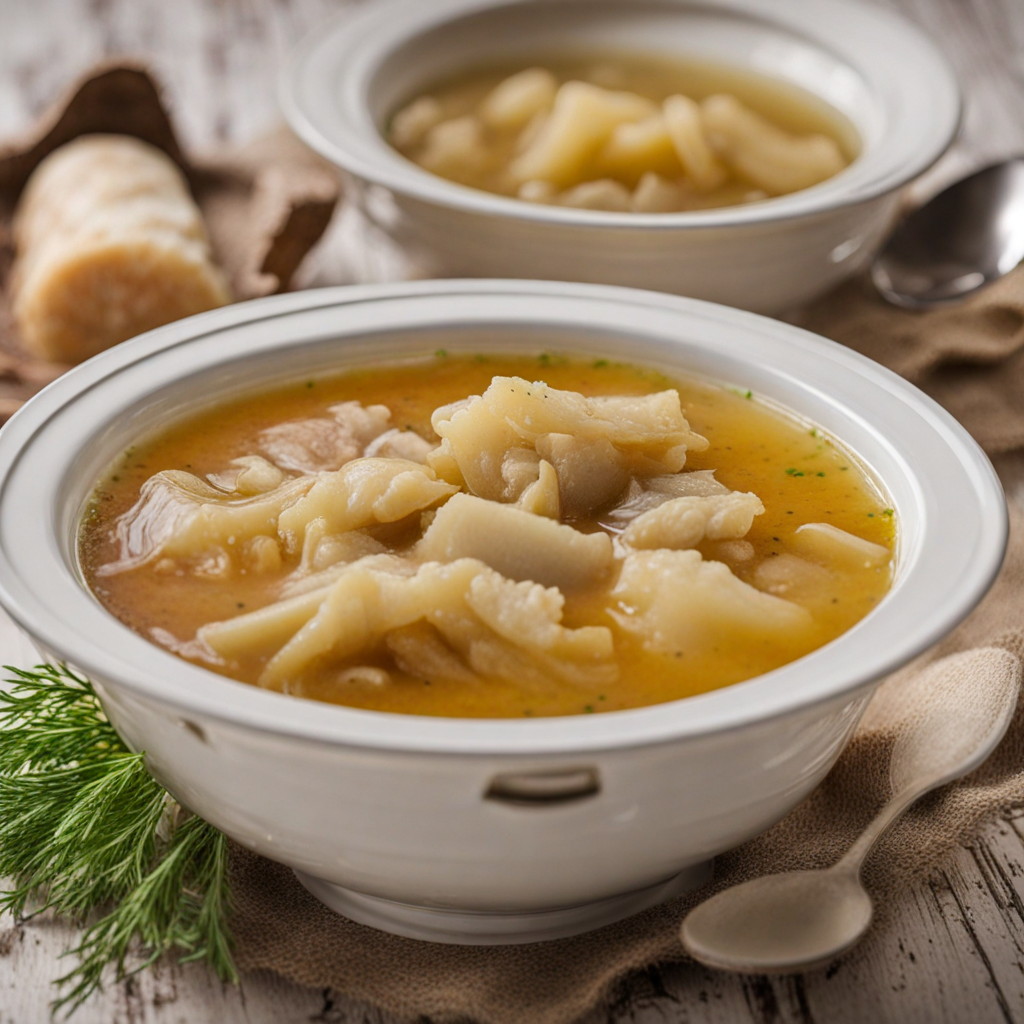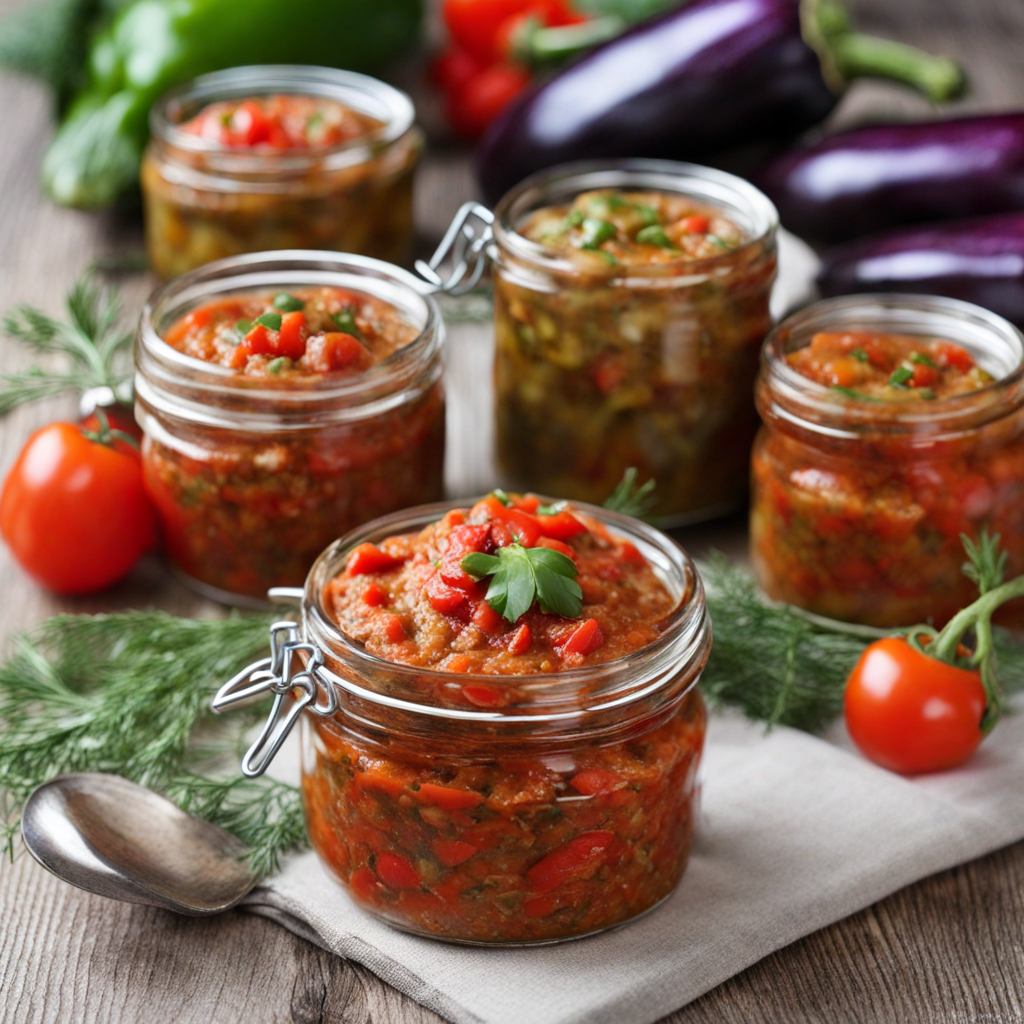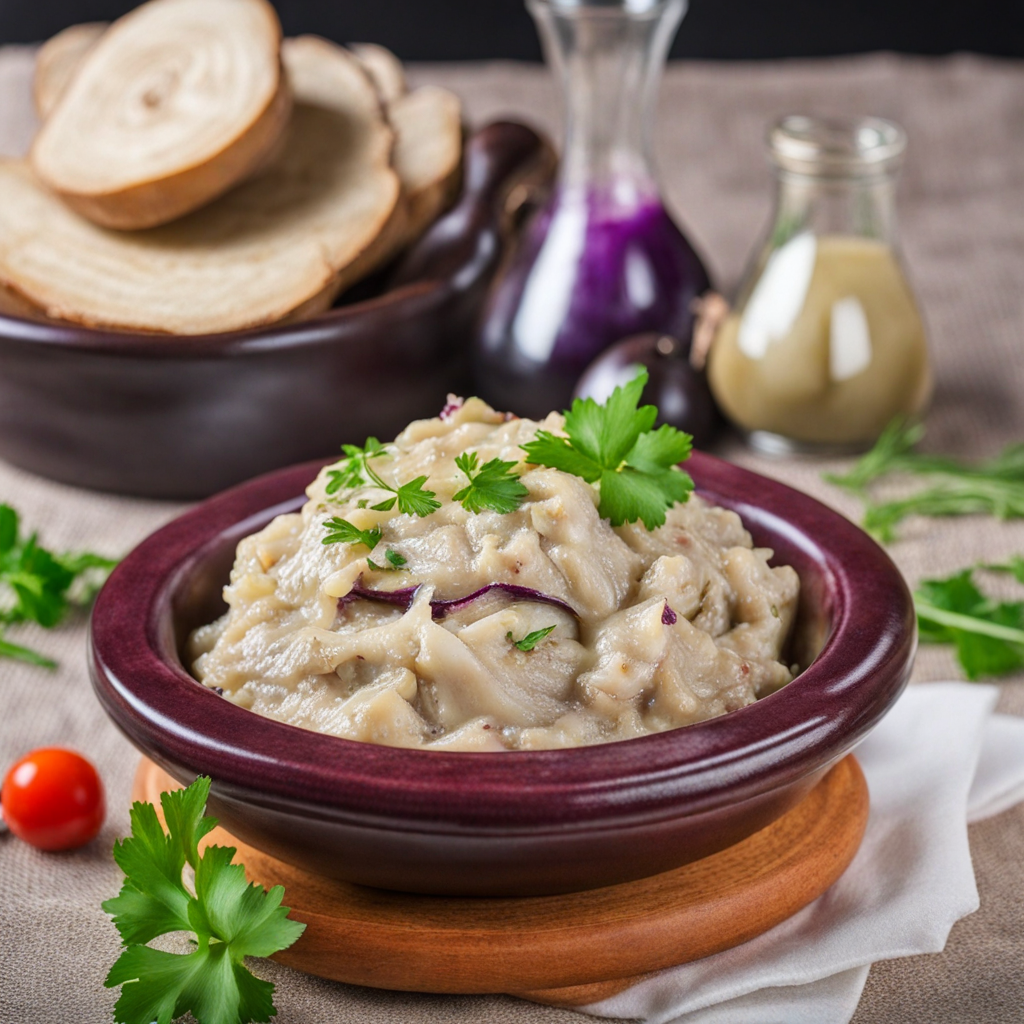Plum Dumplings
Plum Dumplings, or "Gomboti" as they are known in Romania, are a delightful culinary treat that perfectly encapsulates the essence of Romanian comfort food. These delectable dumplings are made from a soft potato dough that envelops a juicy, ripe plum, traditionally using the sweet and slightly tart varieties such as the Italian prune. The simplicity of the ingredients allows the natural sweetness of the plums to shine through, creating a harmonious balance of flavors that is both satisfying and nostalgic for many Romanians. Each bite offers a tender texture that contrasts beautifully with the burst of flavor from the fruit inside. Once cooked, Plum Dumplings are often rolled in a generous coating of toasted breadcrumbs and sprinkled with sugar, adding an extra layer of richness and a delightful crunch. The breadcrumbs not only provide a textural contrast but also enhance the overall sweetness of the dish, making it a favorite dessert or a comforting snack. The dish is sometimes finished with a drizzle of melted butter or a dollop of sour cream, which adds a creamy element that complements the fruitiness of the plums. This combination of flavors and textures makes Plum Dumplings a truly unique experience for the taste buds. Cultural significance also plays a role in the popularity of Plum Dumplings in Romania; they are often prepared during family gatherings and special occasions, creating a sense of togetherness and tradition. The recipe has been passed down through generations, with each family adding its own twist to the dish. Whether enjoyed warm as a dessert or served as a sweet side dish, Plum Dumplings are a celebration of Romanian culinary heritage that invites those who try them to savor a taste of history and home.
How It Became This Dish
Galuște cu Prune: A Sweet Slice of Romanian Culinary Heritage In the culinary landscape of Romania, there exists a delightful dish that has captured the hearts and palates of its people for generations: galuște cu prune, or plum dumplings. This traditional treat is more than just a food item; it is a rich tapestry woven into the cultural and historical fabric of Romania, embodying the essence of its agricultural heritage and familial bonding. Origins of Galuște cu Prune The origins of galuște cu prune can be traced back to the rural regions of Romania, where the bountiful plum orchards flourished. Plums, particularly the small, sweet varieties, have long been a staple in Romanian agriculture. The country's temperate climate and fertile soil have made it ideal for fruit cultivation, and plums were among the first fruits to be domesticated in the area. Historical records indicate that plums were consumed in various forms dating back to ancient times, but it was during the Middle Ages that they began to be incorporated into more complex dishes. The concept of stuffed dumplings is not unique to Romania; similar dishes can be found in various cultures around the world. However, galuște cu prune, with its distinctive Romanian flair, showcases the local ingredients and culinary practices that define the nation's cuisine. Made primarily from a dough of potatoes, flour, and eggs, the dumplings are filled with halved plums, usually sprinkled with sugar and sometimes cinnamon, before being boiled and served with a drizzle of melted butter and a dusting of breadcrumbs or sweetened sour cream. Cultural Significance Galuște cu prune holds a special place in Romanian culture, especially within the context of family gatherings and festive occasions. This dish is often prepared during the summer and early autumn, coinciding with the plum harvest, making it not only a seasonal delight but also a symbol of abundance and gratitude for the earth's gifts. The act of preparing galuște cu prune often brings families together, as children learn the traditions from their grandparents, instilling a sense of continuity and community. In Romanian folklore, plums are often associated with prosperity and fertility. The plum tree, known for its resilience and hardiness, symbolizes strength and sustenance. Therefore, galuște cu prune is not merely a dessert; it represents the connection between the Romanian people and their land, embodying the agricultural traditions that have sustained them through centuries of change. Development Over Time As Romania experienced various socio-political changes—from the medieval feudal system to communist rule—so too did the culinary landscape evolve. Galuște cu prune adapted to reflect these shifts. During the interwar period, when Romania was embracing modernity, traditional dishes like galuște cu prune were often reinterpreted in urban settings, where they became more refined and were served in restaurants. The dish began to appear on menus as a representation of national pride, showcasing local ingredients to both locals and international visitors. The communist era brought about significant changes in agricultural practices and food availability. With state control over farming, accessibility to fresh, local produce fluctuated, but the resilience of Romanian culinary traditions ensured that galuște cu prune remained a beloved staple. Families would often preserve plums through drying or making jams, allowing them to enjoy this traditional dish year-round, even when fresh plums were not available. In the post-communist era, as Romania reintegrated into the global food landscape, galuște cu prune experienced a resurgence. Chefs and home cooks alike began to celebrate traditional recipes, often incorporating modern techniques and presentations. This revival coincided with a growing interest in slow food movements and local sourcing, prompting many to return to the roots of Romanian cuisine. Food festivals celebrating regional dishes have also emerged, further solidifying the place of galuște cu prune in contemporary Romanian gastronomy. Modern Interpretations Today, galuște cu prune can be found in various forms across Romania, each region adding its unique twist. Some variations may include different types of fillings, such as sour cherries or even chocolate, while others may explore alternative cooking methods, like baking instead of boiling. Despite these adaptations, the essence of galuște cu prune remains unchanged: a comforting, hearty dish that evokes nostalgia and warmth. The dish has also found its way into the hearts of Romanians living abroad, serving as a culinary reminder of home. Many expatriates share the recipe with their children, ensuring that the tradition continues to thrive in diaspora communities. Social media has played a role in this cultural exchange, with countless food blogs and Instagram accounts dedicated to showcasing traditional Romanian recipes, including galuște cu prune. Conclusion Galuște cu prune is much more than a simple dessert; it is a reflection of Romanian history, culture, and identity. Rooted in agricultural tradition, it serves as a symbol of family unity and communal sharing, bringing generations together through the shared act of cooking and enjoying food. As Romania continues to evolve, so too does the appreciation for its culinary treasures, ensuring that dishes like galuște cu prune remain relevant and cherished. As we savor these delicate dumplings, filled with sweet plums and drizzled with butter, we partake not only in a delicious culinary experience but also in a rich historical narrative that speaks to the heart of Romania itself. Whether enjoyed on a festive occasion or as a comforting reminder of home, galuște cu prune encapsulates the spirit of a nation, one bite at a time.
You may like
Discover local flavors from Romania







